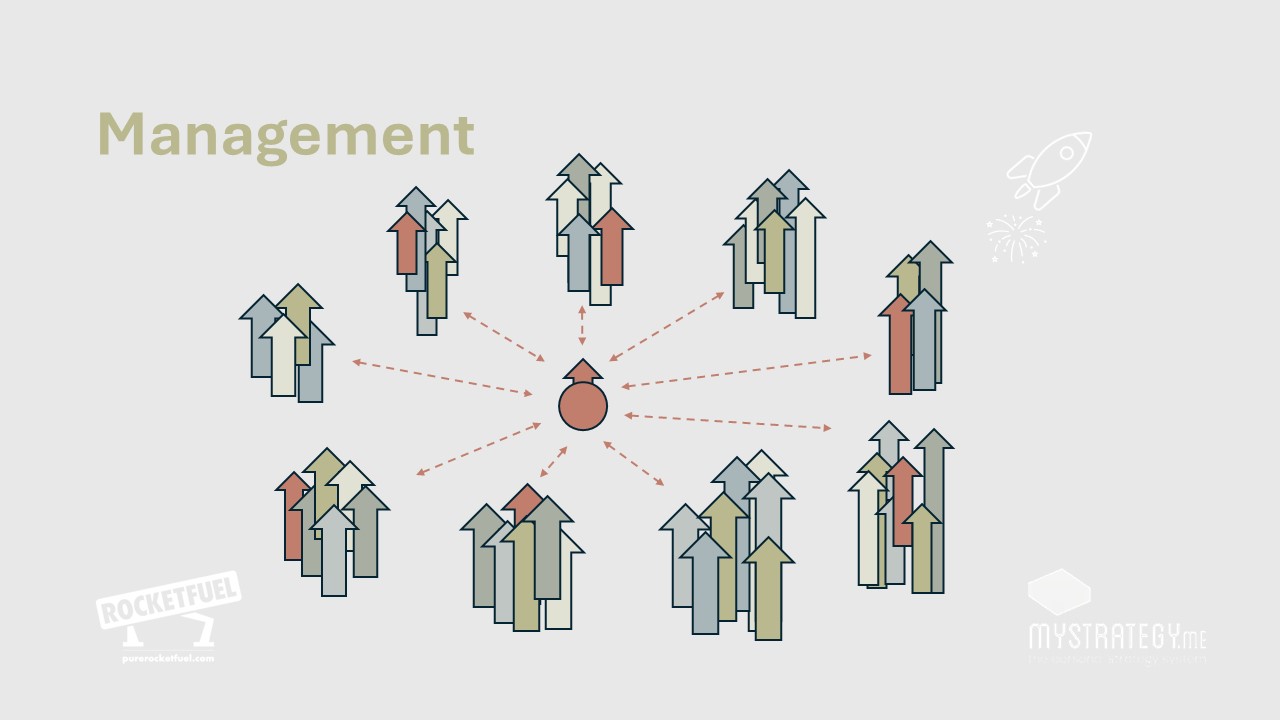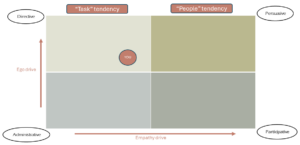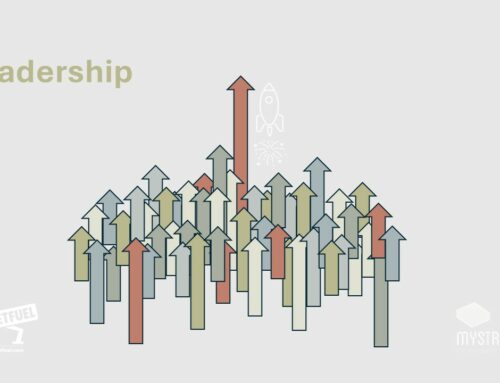
Keep it simple and focus on implementing the basics of Management & Leadership Styles rather than on drowning in endless new variations on old theories, recommends Leadership & Performance Coach, Davina Greene.
“I’m red!”, “I’m yellow!” shout the past DISC-users enthusiastically as I enter their premises. “I’m ESTJ!”, “I’m INFP!” shout the past Myers-Briggs users as I enter theirs.
“That’s great”, I say at a normal volume, peppered with a hint of skepticism, but batting my eyelids innocently. “And what have you done with that information, as Managers?”.
“Huh?”
“Well, somebody clearly paid for you to do some psychometric assessments at some point in the past, right? That usually means that some form of learning and personal growth – and, dare I say, personal change – is expected afterwards. So tell me all about how you’ve adapted your Leadership Styles”.
Silence.
And so it goes. The world of coaching and training is rife with a checklist-style approach learning:
- Course attended – tick
- Proud announcement made on LinkedIn that course was attended – tick
- Line added to CV that course was completed – tick
- Information filed away/forgotten, never to be used again – tick
But I cannot entirely blame those people. I truly believe that some coaches and trainers (and managers) simply are not good enough at guiding change, saying No to demands for shiny new theories, and ensuring that real gains come from coaching conversations. A long time ago, I started making clear to my audiences that they would be getting a certain amount of theory from me, and after that it would be 99% conversation about those theories, about their real world experience, and about formulating and evidencing changes using only that information. Unless, of course, it were to become very clear that the introduction of an alternative theory would be more useful.
Since then, success rates have increased, as true participation – rather than box-ticky, “entertain me”-type participation – was finally in place.
Simplicity wins again.
The 4 Core Management & Leadership Styles
What do I do? I bring it back to 4 core behavioral types for Management or Leadership (it’s largely interchangeable at this level). Did I invent them? No. Did anyone? Not really “invented”, but people have been documenting them already for quite some time. And I’m an “If it ain’t broke” kind of gal, so I like to stick with simple, early theory (thanks, Mr. Hersey and Mr. Blanchard) unless I see the need to do otherwise. I also try to align theories across subject matter, rather than presenting everything as being entirely different, which can be pointlessly intimidating when the environment you’re trying to create is one of willing, positive, not-entirely-impossible change.
What do I mean? I’ll show you.
After a good chat about preferences for the Task side of work versus the People side of work, my preferred wording for Management or Leadership Style comes down to 4 core terms: Directive, Administrative (on the Task side), Participative, and Persuasive (the People side). Over 20 years ago, we did a psychometric at work that used this terminology and it did everything it needed to do, whilst allowing plenty of room for individual thinking and self-reflection within those. To this day, it’s still all I need.

Fig. 1: 4 Key Management & Leadership Styles
On the left hand side of the grid, we see Directive Style at the top and Administrative Style at the bottom – both Task-related. On the right hand side, we see Persuasive Style and Participative Style, both People-related.
To the left, going upwards, we see “Ego drive” – not an arrogance (not necessarily, anyway), but a strength or force of character that, across the top of the grid might be quite intimidating. Those at the very bottom of the grid will be a bit more ‘meek and mild’.
At the bottom, going left to right, we see “Empathy drive” – the degree to which we are concerned with People issues. This makes sense, of course, considering the Task styles are on the left and the People styles are on the right.
What kind of things do simple conversations around these wordings tell us? As always, talking about the extremes is more illustrative, and you can dilute your own position inwards from there, should you see fit.
Let’s imagine I was coaching you about your relationship with your manager and how to build it. I ask you to put a dot on the grid to illustrate your manager’s default style, and explain it to me. The details may go as follows:
Directive: If you were to put a dot in the top left corner of the grid, I would be a little worried about you. In this extreme corner, you’d be telling me that your boss was a bit of a tyrant, requiring a BIG jump across the grid to get anywhere near one of the other 3 styles. With high ego drive, this person is very driven in their Task-orientation, with little care for the People side of things. They have no fear of people, but when they approach people, it’s with full force. Things are getting done, but they’re getting done loudly.
Administrative: If you were to put a dot in the bottom left corner of the grid, you might not have a great relationship with this person due to sheer lack of contact. This person loves data, process, procedure…and would really prefer it if those pesky colleagues and direct reports would just stay away and leave them to their keyboard. Things are getting done, but they’re getting done quietly.
Persuasive: If you were to put a dot in the top right corner of the grid, you possibly very much like this person, but may for example be concerned that you’re not learning very much from them, and even wondering how they’re in the role they’re in. This person might be the office “politician”, the mover-and-shaker who is endlessly working the floors, engaging with everyone, “getting your vote” in case it’s ever needed. But they may not be so hot on detail – as you can see, they’re the polar opposite of the Administrative manager. Task? What task?
Participative: If you were to put a dot in the bottom right corner of the grid, you possibly very much like this person, but you might be concerned at their decision-making skills, for example. Every time something happens, the whole team has to be brought into a room, everyone’s opinion has to be sought, everyone has to stay in the room until consensus is reached and everyone is happy. Are they a manager or a friend? Will the task ever get done? I mean, Employee Engagement is lovely, but….
Again, these examples are the extremes, for illustration. There’s no right or wrong position on this grid – we need all types of people with all types of Leadership Styles, and we need everyone to be able to stretch with some degree of competence into the other 3 styles – but it has to be said that those far corners imply quite a bit of restriction in a person’s ability or willingness to stretch their style.
It’s often easier to start the conversation by reference to other people in the coachee’s world. But the moment comes when they have to turn the theory on themselves. For that bit, my starting gambit is “When you get out of bed in the morning, before anyone has had the time to make you happy, sad, angry or whatever: who are you?”. This speeds us towards a more correct judgment (and honesty level) about Leadership Styles.
Next Steps after Learning about Leadership Styles
I take a 3-step view, in terms of how impressed I’ll be with a Manager’s engagement with coaching.
- The basic level: They are satisfied that there is a standard Leadership Styles word for who they are/how they are, and view this as a “license” to continue in the exact same way, whether due to lack of comprehension or whether due to misplaced sense of cunning.
- The intermediate level: They are open to the fact that some people (weirdos, obvs) might not find their standard modus operandi to be appealing, and confirm themselves ‘open to discussion’ if any of those people care to address Leadership Styles with them on a day-to-day basis.
- Advanced level: These budding Jedi Masters completely get the importance of being able to flex between Leadership Styles. They are learning who they are, and are keen to be proactively in their observation of, and adaptation to, other people as they seek to build relationships and set themselves up for leadership. If only we could clone them…
A recurring CIPD Survey on Health & Wellbeing At Work regularly shows that poor ‘management skill and confidence’ is a key factor in decreasing wellbeing (indicated by 43% of respondents in 2023), demonstrating the importance of mastering behavioral awareness and flexibility when we deal with people.
How do you think you’re doing?
Interested in investing in your own personal – and personal strategy – development? Check out www.MyStrategy.me!
Share This!
About the Author



